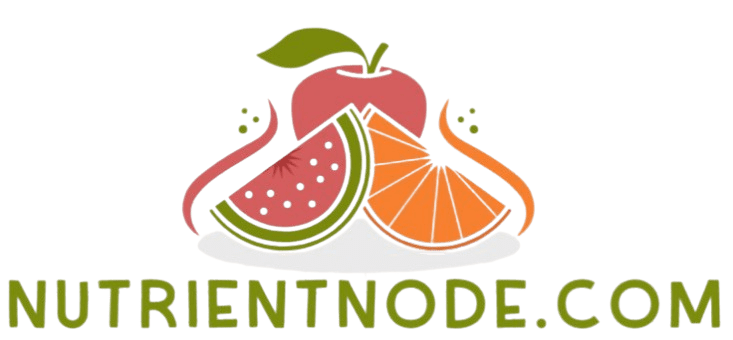How to Follow the USDA Dietary Guidelines
Navigating nutrition can be exciting, but it’s easy to feel lost in the sea of advice! The USDA Dietary Guidelines serve as your guiding light, providing science-based recommendations aimed at promoting health and preventing chronic diseases.
This article delves into these guidelines, breaking down their key components while offering practical tips for seamlessly incorporating them into your daily meals. You ll also discover the numerous benefits of adhering to these guidelines.
It addresses the challenges you may face on this journey and provides strategies to maintain consistency for long-term health.
Whether you seek to enhance your eating habits or simply wish to gain a clearer understanding of these guidelines, this comprehensive overview has you well covered.
Contents
- Key Takeaways:
- Understanding the USDA Dietary Guidelines
- Key Components of a Healthy Diet
- How to Incorporate the Guidelines into Your Diet
- Benefits of Following the Guidelines
- Challenges and Limitations of the Guidelines
- Staying Consistent with the Guidelines
- Frequently Asked Questions
- What are the USDA Dietary Guidelines?
- Why is it important to follow the USDA Dietary Guidelines?
- How can I follow the USDA Dietary Guidelines?
- How many servings of fruits and vegetables should I consume per day?
- Can I still enjoy my favorite foods while following the USDA Dietary Guidelines?
- Are there resources available to help me follow the USDA Dietary Guidelines?
Key Takeaways:

- Understand the USDA Dietary Guidelines and who they are for to make informed decisions about your diet.
- Fill your plate with colorful fruits and veggies for better health!
- Use practical tips and strategies to overcome challenges and maintain a consistent healthy diet long-term.
Understanding the USDA Dietary Guidelines
Understanding the USDA Dietary Guidelines is crucial for anyone looking to enhance their health and nutrition through informed food choices. Crafted by the U.S. Departments of Agriculture (USDA) and Health and Human Services (HHS), these guidelines are designed to promote health, prevent disease, and assist you in incorporating dietary guidelines in family meals to meet your nutrient needs at various stages of life.
The 2020-2025 Dietary Guidelines highlight the significance of dietary patterns, encouraging you to incorporate a variety of food groups that support overall health and well-being. To effectively implement these guidelines, consider exploring how to set personal goals based on dietary guidelines, which provide practical resources for nutrition education and dietary guidance, enabling you to make choices that benefit your health.
What are the Guidelines and Who are They For?
The Dietary Guidelines for Americans offer a clear guide for healthy eating, specifically designed to meet the diverse nutritional needs of various populations, including navigating dietary guidelines as a vegetarian, ultimately aimed at reducing the risk of chronic disease.
These guidelines hold particular relevance for children, who need essential vitamins and minerals for optimal growth and development.
Pregnant women benefit greatly from these guidelines, as they require additional nutrients to support both maternal health and fetal development.
Older adults benefit significantly, given that they often encounter unique health challenges. Careful dietary planning is essential for managing chronic conditions such as diabetes and hypertension in this demographic.
By promoting a balanced intake of fruits, vegetables, whole grains, and lean proteins, the guidelines serve as an invaluable resource. To further support this, learn how to teach children about dietary guidelines, enabling individuals to navigate their nutritional choices and enhance their overall health and well-being throughout their lives.
Key Components of a Healthy Diet
Key components of a healthy diet involve a diverse array of dietary patterns and food groups.
By incorporating these elements, you ensure an adequate intake of essential nutrients, ultimately promoting your optimal health and nutrition.
Recommended Food Groups and Portions
The recommended food groups and portions highlight the essence of balanced dietary intake, emphasizing energy, fiber, and healthy fats to help you achieve optimal nutrition.
To effectively embrace these principles, aim to fill half your plate with a colorful array of fruits and vegetables. Whole grains, such as brown rice, quinoa, and whole-grain bread, should occupy a quarter of your plate, delivering essential fiber that aids digestion.
Lean proteins like chicken, fish, beans, and legumes will complete the remaining quarter, supporting your muscle health. Incorporate healthy fats from sources like avocados, nuts, and olive oil to enrich your meals without adding unnecessary saturated fats.
These guidelines align beautifully with the MyPlate framework, fostering a holistic approach to nutritious eating that enables you to thrive.
How to Incorporate the Guidelines into Your Diet

Incorporating dietary guidelines into your diet is entirely achievable with a range of practical tips and strategies designed to enhance healthy eating and enable informed food choices. For more information, check out this guide on how to prepare for dietary guidelines assessments.
Start today by exploring new recipes, planning your meals, and making small changes that align with the USDA Dietary Guidelines. Learn how to leverage dietary guidelines for weight loss. Your journey towards healthier eating awaits!
Practical Tips and Strategies
Healthy eating is all about smart meal planning and mindful food choices. Utilize resources from understanding dietary guidelines to enhance your meals.
Choose seasonal foods for better health benefits and to support local farmers. Fresh produce not only adds flavor but also helps you keep vital nutrients.
Explore online platforms for a variety of healthy recipes. They make it easy to discover new and interesting dishes.
Using these resources effectively can simplify meal prep, making it enjoyable and less time-consuming. Don t hesitate to try out different cooking techniques like roasting, steaming, or grilling. These methods will help you develop exciting and healthy eating habits that you ll love!
Benefits of Following the Guidelines
By following the dietary guidelines, you unlock numerous health benefits that enhance your well-being and lower the risk of chronic diseases.
Embracing these principles can transform your life and lead to a healthier, more vibrant future.
Improved Health and Well-Being
Improved health and well-being are key outcomes of following dietary guidelines, which serve as a roadmap for preventing chronic diseases through nutrition.
When you adhere to these guidelines, you can achieve effective weight management, crucial for reducing the risk of diabetes and heart disease. A balanced diet filled with fruits, vegetables, whole grains, and lean proteins can boost your energy levels, keeping you active throughout the day.
Good nutrition directly affects your mental health. Eating nutrient-dense foods can enhance your mood and cognitive function, reducing the risk of depression and anxiety. By prioritizing these dietary practices, you nurture not just your physical health but also your emotional well-being, creating a holistic approach to a healthier life.
Challenges and Limitations of the Guidelines
The dietary guidelines aim to enhance your health, but they face challenges and limitations that can affect their implementation in daily life.
Potential Barriers and Controversies

Potential barriers and controversies often stem from varying opinions on food choices, nutritional education, and accessibility.
These debates become especially pronounced concerning dietary supplements. While some see them as beneficial, others raise valid concerns about their effectiveness and safety.
The influence of the food industry complicates matters, as aggressive marketing can distort your understanding of what a healthy diet entails. You may find yourself drawn to advertisements for packaged foods full of artificial additives, even as the demand for whole, unprocessed ingredients increases.
Economic factors also create significant disparities in access to healthy options. Many individuals navigate food deserts, where affordable, nutritious foods that follow established dietary guidelines are frustratingly unavailable.
Staying Consistent with the Guidelines
Maintaining consistency with dietary guidelines is crucial for ensuring a healthy diet over the long term. This commitment is best supported by continuous nutrition education and self-discipline.
Maintaining a Healthy Diet Long-Term
Maintaining a healthy diet requires commitment to dietary guidelines. Understanding lifestyle choices that support your well-being is crucial.
It helps to connect with social networks and community resources that promote healthy eating. Engage with friends and local organizations to create a nurturing environment.
Community gardens, cooking classes, and farmers’ markets can enrich your food experiences. These activities also strengthen bonds with like-minded individuals.
Such interactions foster accountability and motivation. They can significantly boost your chances of sticking to a sustainable eating plan.
Frequently Asked Questions
What are the USDA Dietary Guidelines?
The USDA Dietary Guidelines offer science-based recommendations for healthy eating and physical activity in America. They guide you on how to stay compliant with dietary guidelines that promote health and decrease the risk of long-term health issues.
Why is it important to follow the USDA Dietary Guidelines?

Following these guidelines helps maintain a healthy weight and improve overall well-being. They are based on solid scientific evidence.
How can I follow the USDA Dietary Guidelines?
To follow these guidelines, make healthy food choices and engage in regular physical activity. You can learn more about this approach in the article on how to use dietary guidelines for healthier choices. Focus on eating fruits, vegetables, whole grains, lean proteins, and low-fat dairy.
How many servings of fruits and vegetables should I consume per day?
Adults should aim for 2-3 cups of vegetables and 1.5-2 cups of fruits daily. This can vary based on age, gender, and activity level.
Can I still enjoy my favorite foods while following the USDA Dietary Guidelines?
Absolutely! Enjoy your favorite foods in moderation alongside nutritious options. Remember, all foods can fit into a healthy diet.
Are there resources available to help me follow the USDA Dietary Guidelines?
Yes, numerous resources exist. Visit the MyPlate website for personalized nutrition advice and ChooseMyPlate.gov for tips on healthy eating.






